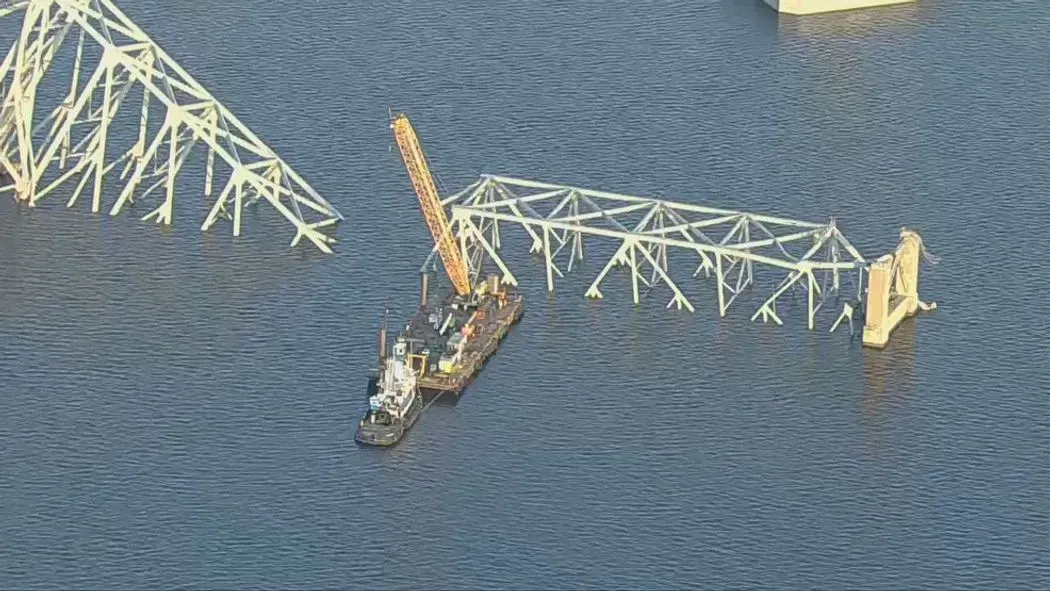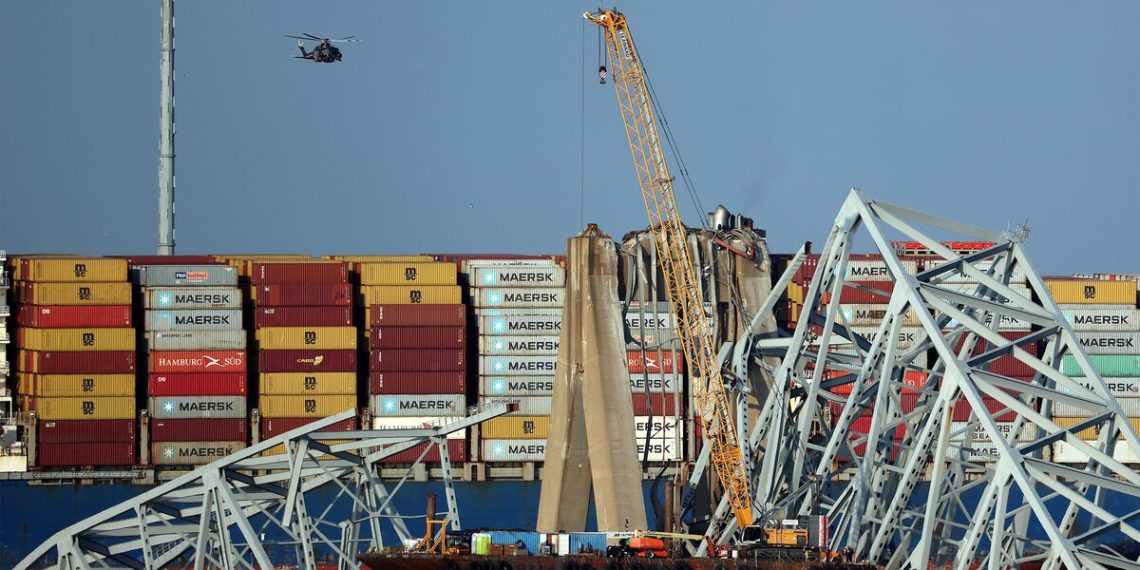Baltimore‘s port faced a daunting challenge as the aftermath of a cargo ship collision with the Francis Scott Key Bridge unfolded.
The collision, which occurred earlier in the week, left the bridge in ruins and the port at a standstill. The wreckage, strewn across the harbor, demanded immediate attention.
As survey crews assessed the damage, the arrival of a colossal crane signaled the beginning of the cleanup efforts.

Capable of lifting up to 1,000 tons, the crane stood ready to remove debris from the water. Another crane was en route to aid in the task, highlighting the urgency of the situation.
Authorities prioritized clearing the port and reconstructing the bridge, essential lifelines for the region’s shipping and transportation industries.
Tragically, six workers, presumed dead, were caught in the disaster. Divers recovered two bodies, but four remained missing beneath the water, all immigrants from Mexico and Central America.
Maryland’s Governor, Wes Moore, emphasized the paramount importance of locating the missing workers. Additionally, the stuck vessel, laden with thousands of containers, posed a formidable obstacle.
Governor Moore’s plea for emergency funds was swiftly answered by the U.S. government, with $60 million allocated for debris removal and reconstruction.

The impact rippled beyond the immediate crisis, affecting the livelihoods of approximately 15,000 people reliant on daily port operations. Lawmakers scrambled to pass emergency legislation to provide income replacement for affected workers.
Moody’s Investors Service warned of the economic repercussions, as the port’s closure disrupted automotive imports and cargo operations.
While the prospect of bridge reconstruction loomed over the long term, the port’s reopening depended on swift debris removal.


















